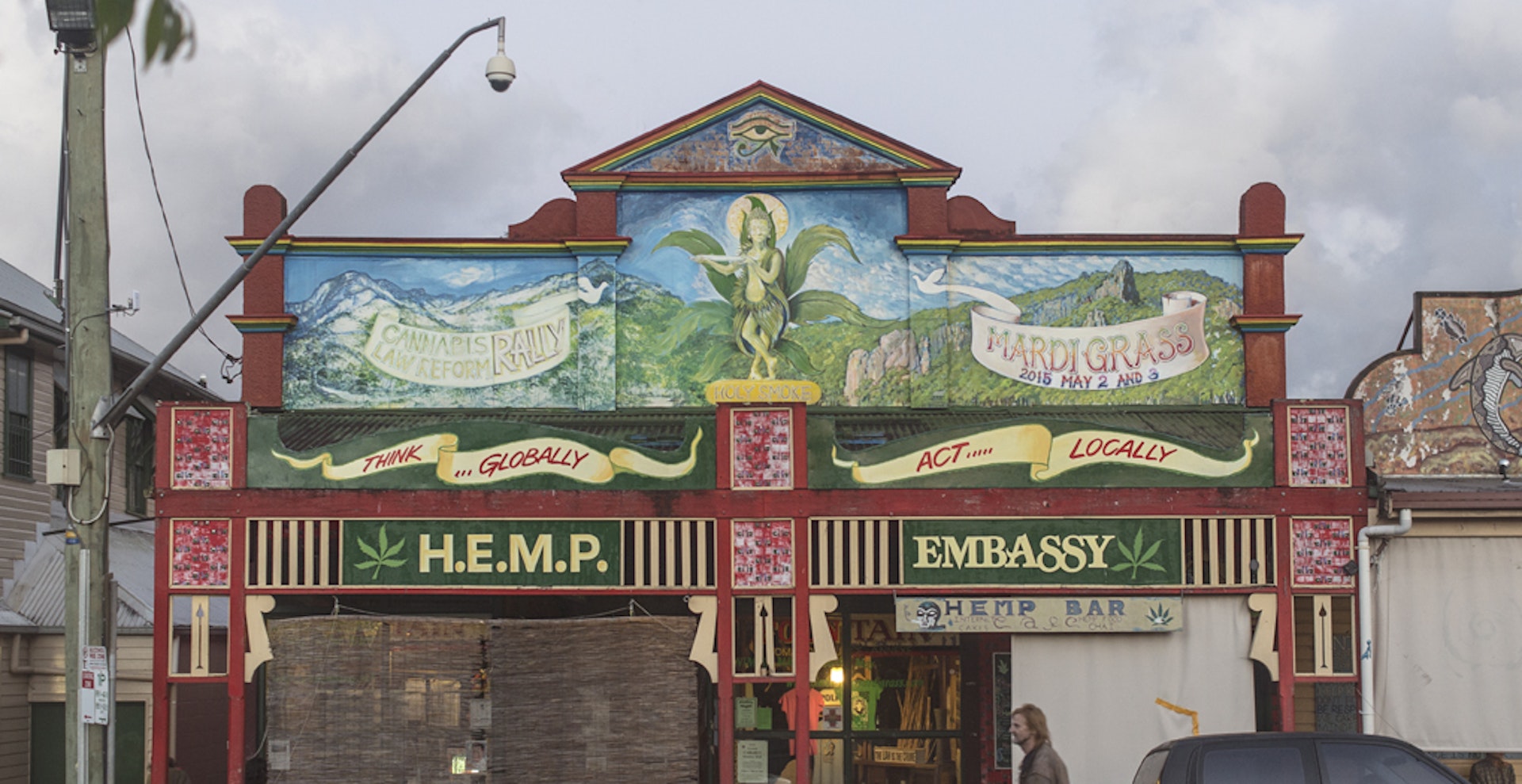
Welcome to Nimbin: The Outback town fighting for a unique way of life
- Text by Harriet Campbell
- Photography by Mark Leaver
In September 1972, a group of Australian students were on the hunt for a spot to host their third Aquarius Festival, a celebration of creativity, sustainability and tie-dye T-shirts. Drawing inspiration from the newly infamous Woodstock that had taken place in upstate New York just three years previously, the group needed somewhere to gather the troops. The place they chose was Nimbin.
A small town in northern New South Wales, Nimbin nestles in a valley of volcanic rock; with a population today of 2,267 it is a similar size to the small farming towns surrounding it. A bit like Glastonbury in the UK, the high street is a jumble of touristy shops selling perfumed candles, smoking paraphernalia and in some cases more contraband goods (at the manager’s discretion, naturally). Since 1996 it has been officially twinned with Woodstock, hoping to encourage cultural traffic between the two.
But back in early 1970s Nimbin too was little more than a farming settlement, predominantly dairy producing: The Nimbin Cheese Company still sends its products all over the country. However the town, as it was, was failing. Businesses were closing and the farming industry that sustained it was in decline.
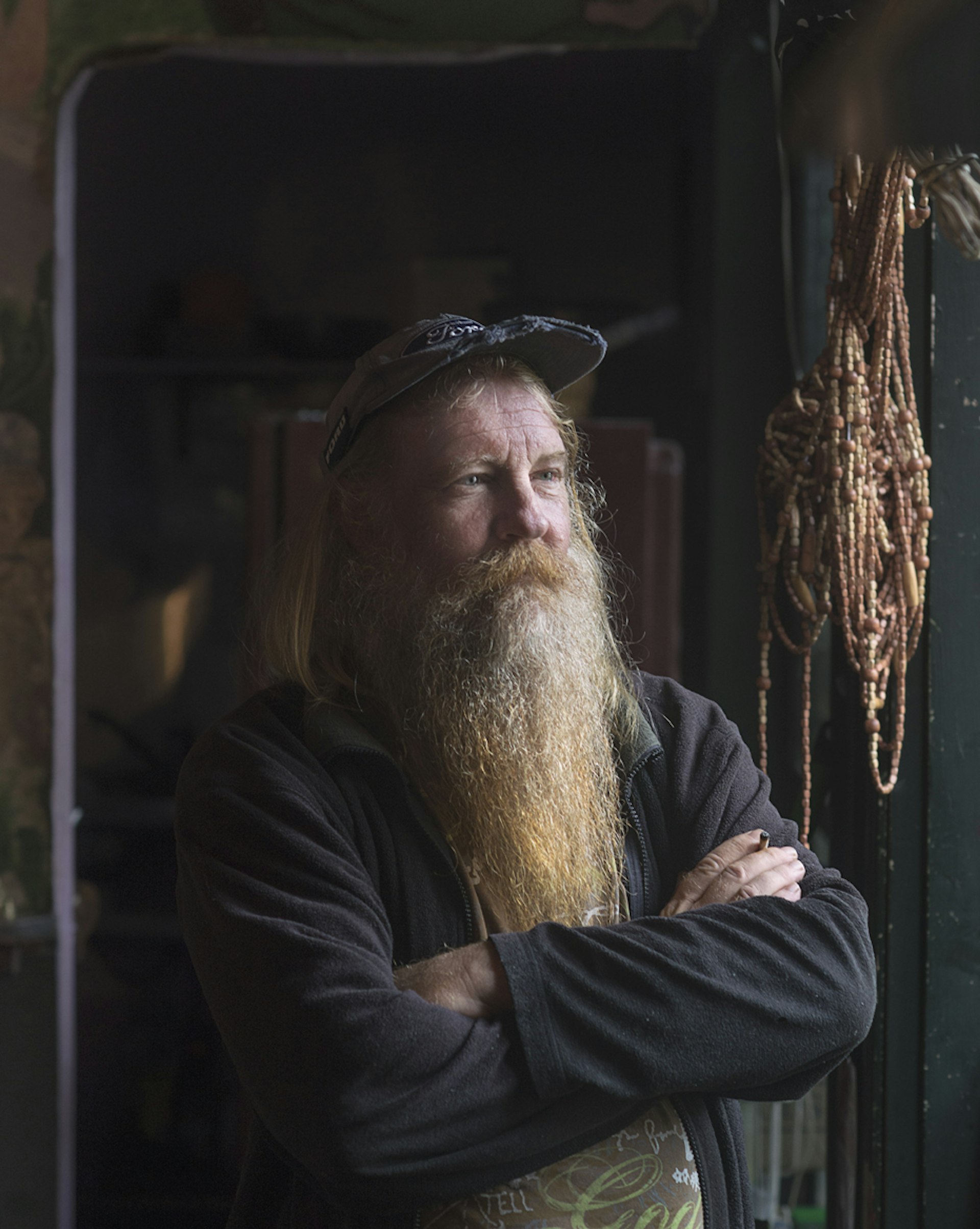
Max Stone
The Aquarius festival lasted ten days but what happened next was to have lasting effects. Shortly after the 1973 festival, community living arrangements were established in the surrounding area. With plots going for as little as $100 it meant that the less affluent were able to own their own land. It also meant that together they were able to able to live out a shared vision of a self-sufficient lifestyle within a communitarian context, part of the original Aquarian vision.
This pattern of settlement spilled over into the wider North Coast region of New South Wales, which became one of the state’s fastest growing regions. In his book People and Politics in regional New South Wales, writer Jim Hagan describes how inland growth after 1966 was evident across “Lismore’s city boundaries, which now included Nimbin and other areas favoured by former ‘Aquarians’”.
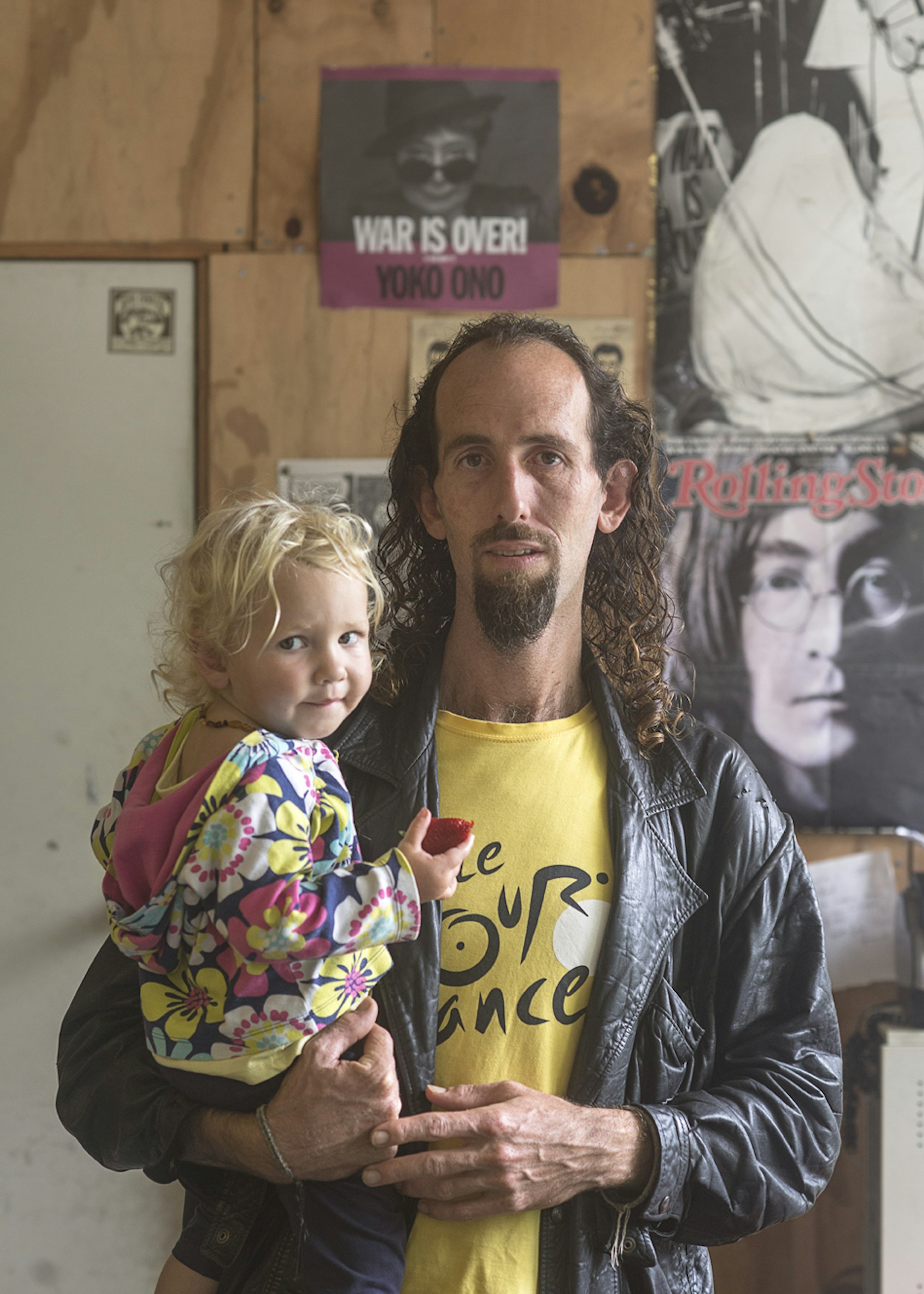
NimFM technical worker with daughter Rose
The Tuntable Falls Community is one of the earliest established and thriving today as one of the largest in the area. Katie Cooke is an original Aquarian and had shares in the settlement as one of the earliest residents. Today, Katie is often found sitting outside The Aquarius Foundation building in the town centre, an organisation established with the aim of maintaining the Aquarian vision and now run by her pretty much single-handedly. A rainbow coloured crochet bag slung around her body is the only visual nod to Katie’s past; “The share we had was just the land” she explains. “It was covered in weeds, we had to make a home out of nothing… so we lived in a big army tent for a few years… we had no amenities, snakes and rats could get in”.
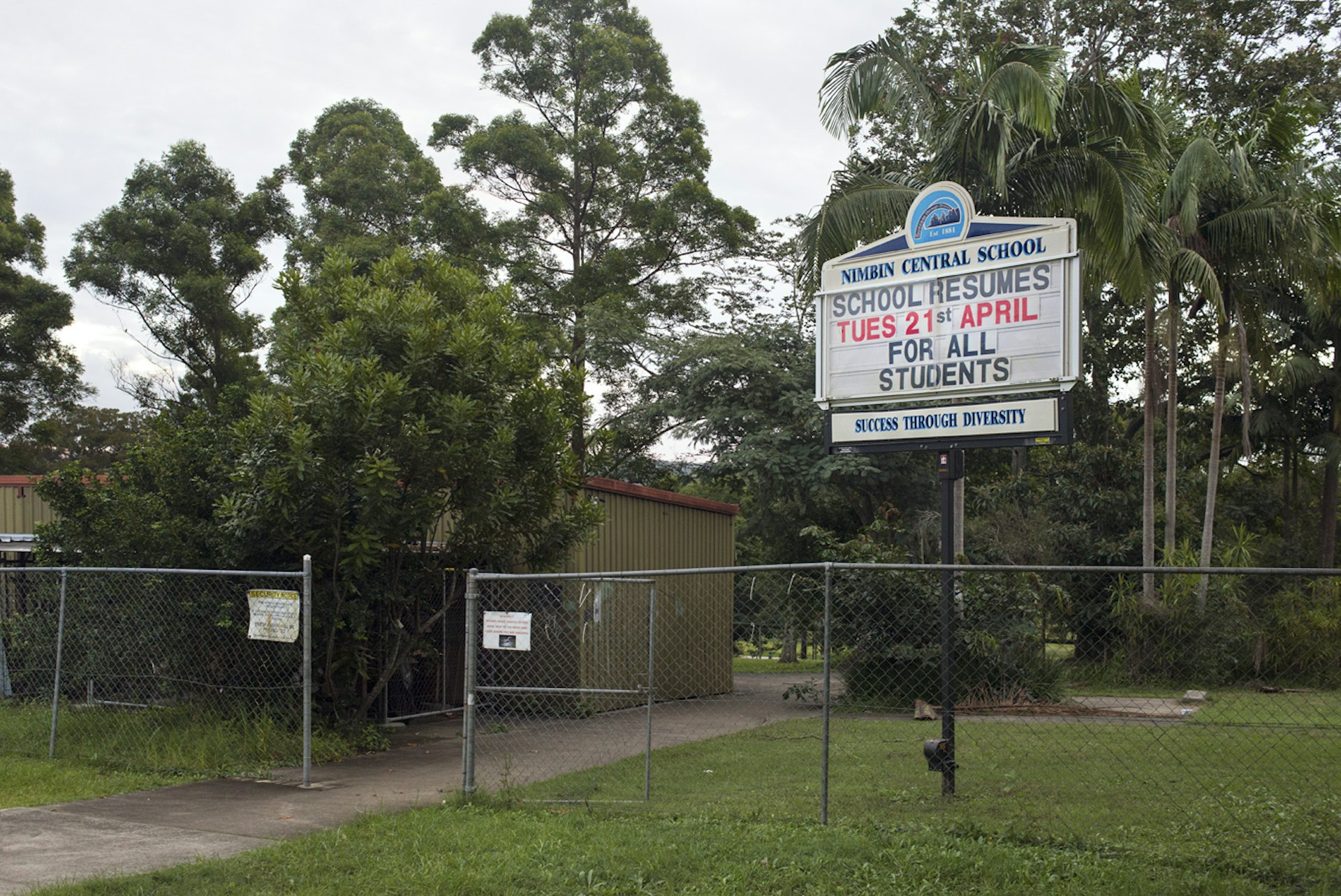
Nimbin School
Rough and ready as it was the community living structure provided security for young families who wanted to raise their children in tight-knit environments. For many it embodied the life they had always dreamed of. But it also had its drawbacks: “For us it was about world peace,” explains Katie, “but we’ve had to fight every step of the way; there’s been issue after issue. We fought laws. We brought in the multiple occupancy laws which was a world first”. Fifteen years after the festival in 1988, previously illegal Rural Landsharing Communities (RLCs) achieved legislative recognition through the State Environmental Planning Policy. This only came about as a result of Nimbin residents’ persistence.
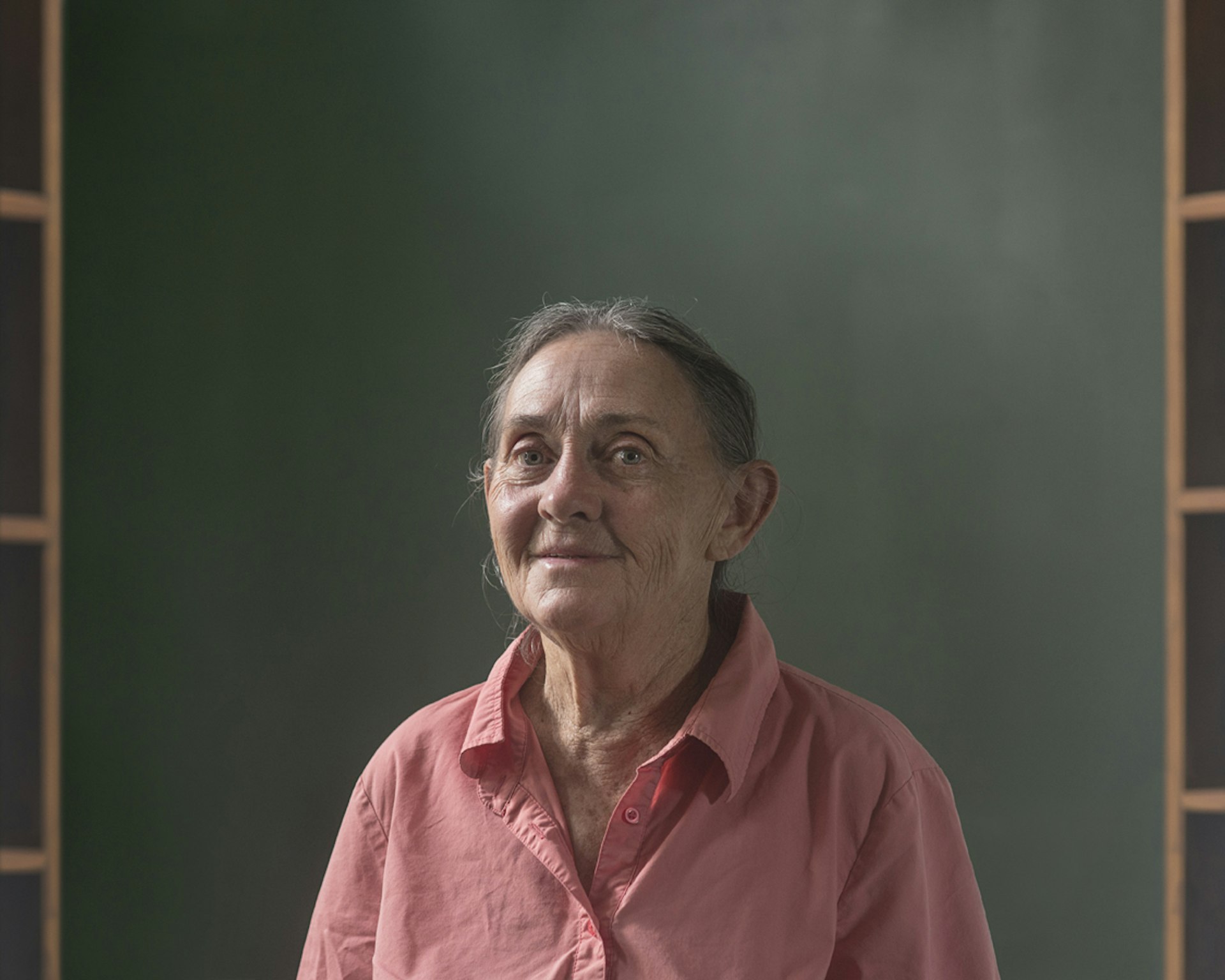
Judy Hale
With a shared ecological ethic, community living and environmental activism often went hand in hand for the Nimbin residents; the rural landsharing legislation was not their only breakthrough. Since the mid-seventies many have been at the forefront of protests against environmental damage, not only in Australia but around the world.
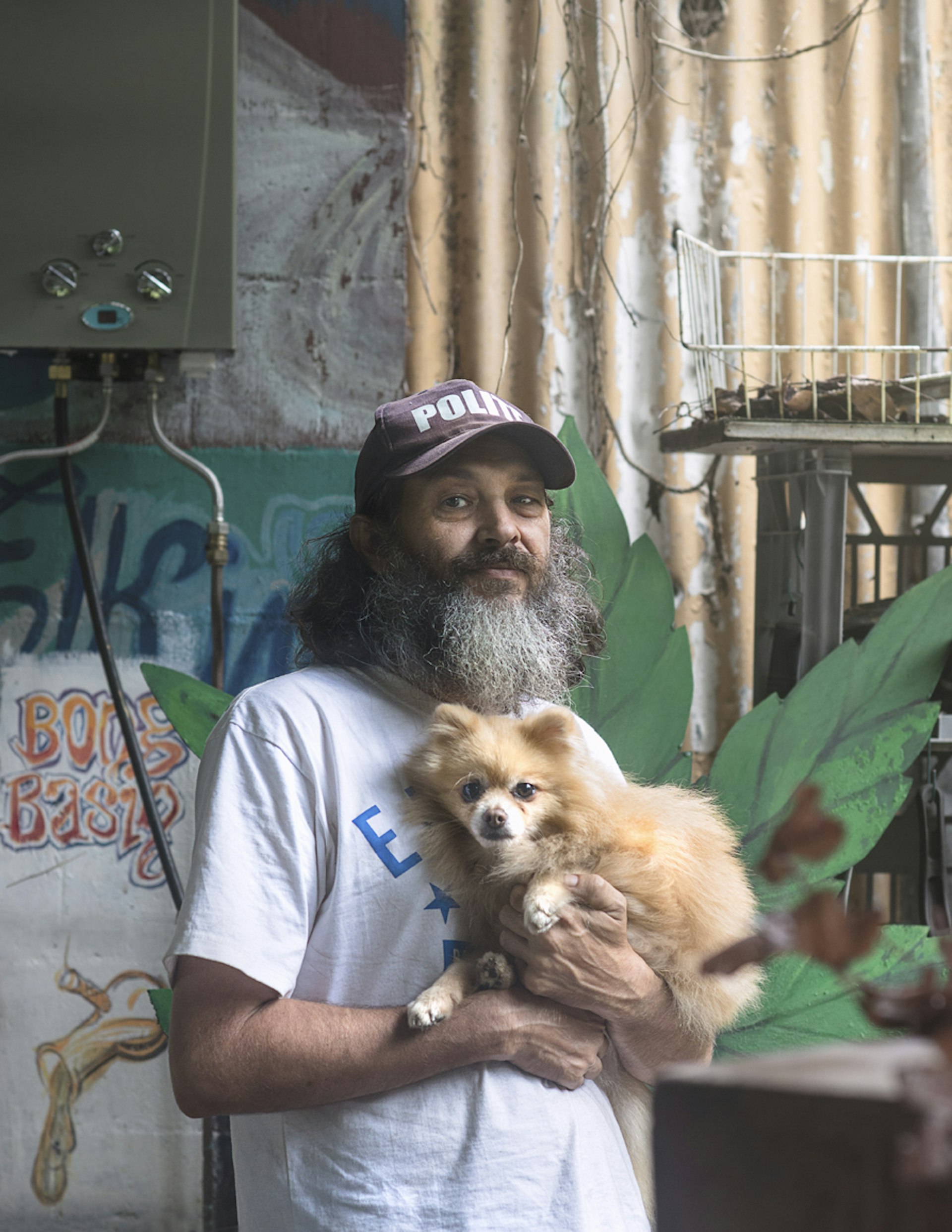
Dave Hippylove Carr
Nimbin Action Group (NAG) was an activist organisation formed in 1979 after a protest that went down in history by putting the conservation of Australian rainforest on the country’s political agenda. Over the course of a month, several hundred people blockaded the bulldozing of ancient rainforest at Terania Creek, an area very close to Nimbin.
Greg Behrend is a teacher who at the time was in his mid-twenties and had recently moved to a local community. Greg was arrested along with 146 others at the Terania Creek protest, “they piled us into the back of a police van” he says now, “We smoked all our dope on the way to the station then we got bailed out and charges were dropped after we signed an agreement not to go back, but of course we did.”
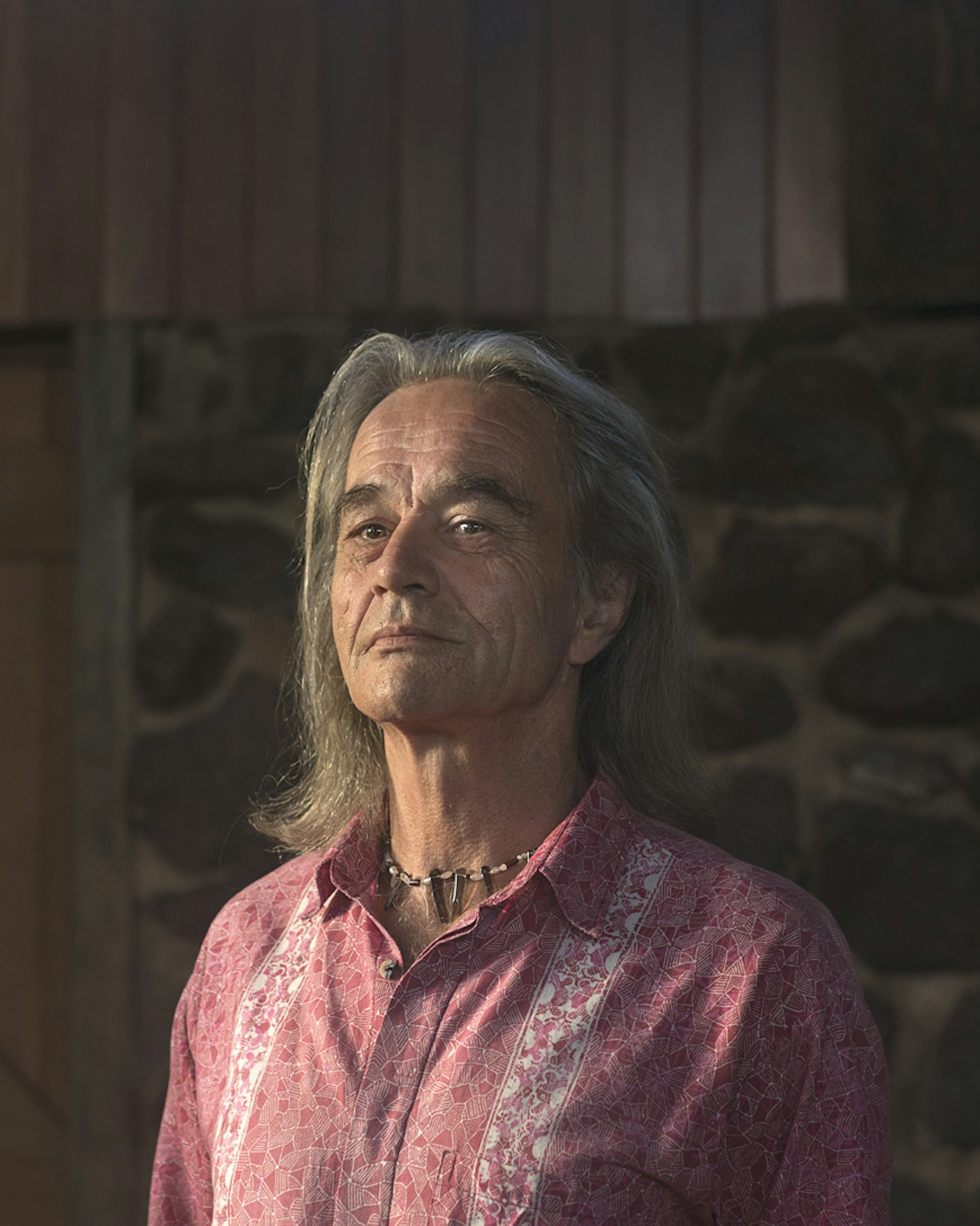
Greg Behrend
Eventually, the government granted the area National Park status, and passed legislation to protect all rainforests in New South Wales. This move, known as the Rainforest Decision started a process which halted the logging of 900,000 ha of state forests and lands across the whole country in order to establish National Parks and Nature Reserves. Again, it was a world first.
After Terania Creek, word spread nationwide that if you want to run a successful campaign as a peaceful action group you need to do it the Nimbim way. Most recently in 2014, activists came together again to protest against planned coal seam gas mining in Bentley, New South Wales, an area not far from Nimbin. This time Greg worked on the gate and on campsites; “it was different this time”, he explains. “Whilst Terania Creek was all hippies, Bentley also had farmers, aboriginals and greenies over a period of five months. It had much more organisation but it stemmed from things we learnt before.”
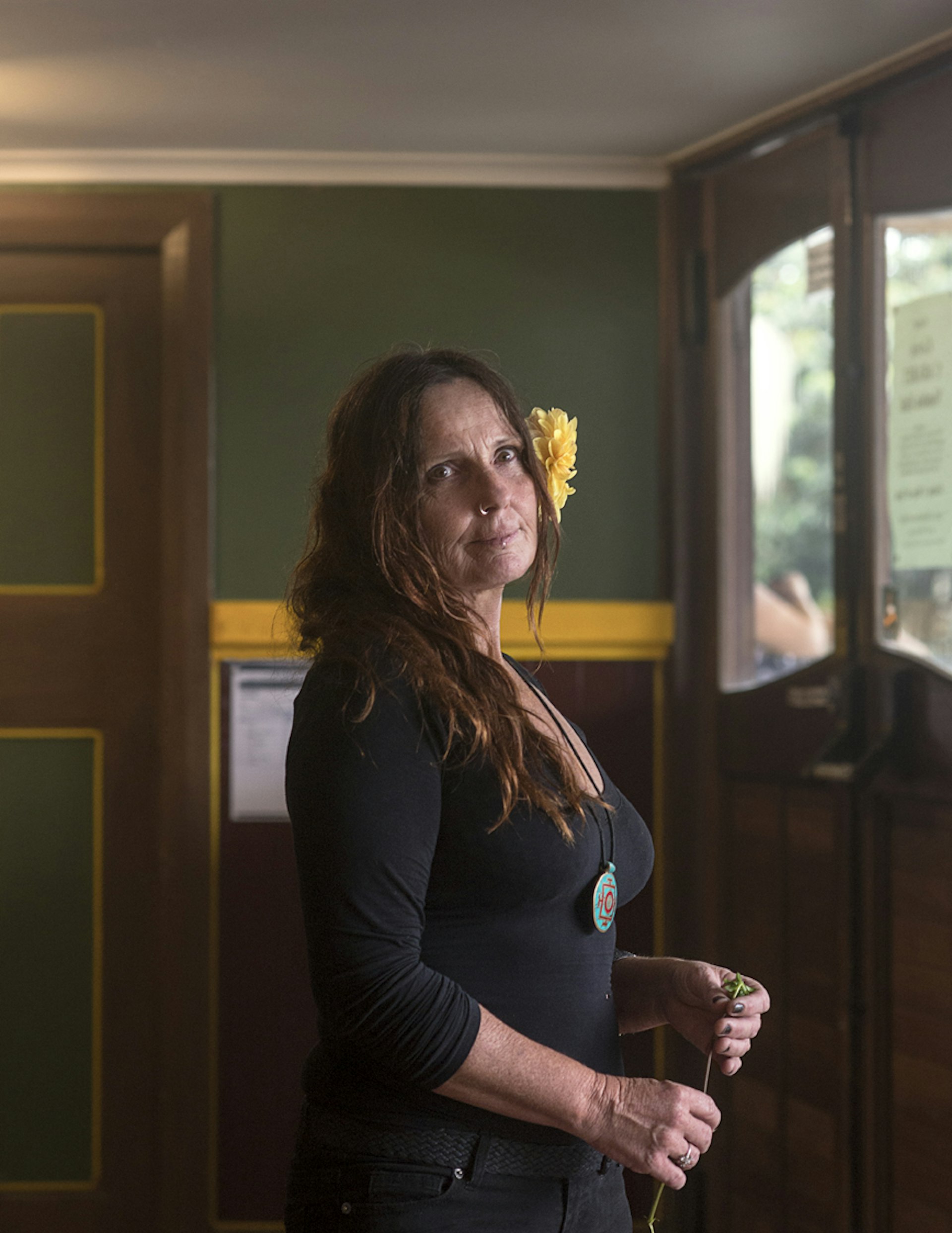
Ivanna Cavallo
Of course for aboriginal communities, the need to defend spiritually significant land is not new, and the outcome of Terania Creek forged a link between environmentalists and indigenous people in the area. In 2014, the Bentley protest saw tribal elders come together with others in an historic meeting in order to declare their joint opposition to the proposed mining. Local farmers were similarly active. The 2015 local election saw the Green Party earn their highest ever volume of votes, coming in a close second in Nimbin’s region of Lismore and earning a seat in the nearby Byron Bay area.
Michael Balderstone, the enigmatic manager of the famous Hemp Embassy (and arguably the unofficial mayor of Nimbin) believes that this is down to momentum generated within the town and recognised by outsiders. “A lot of people believe in Nimbin”, he explains. “They may not want to live here themselves but they believe in what we stand for and they are grateful we are here.”
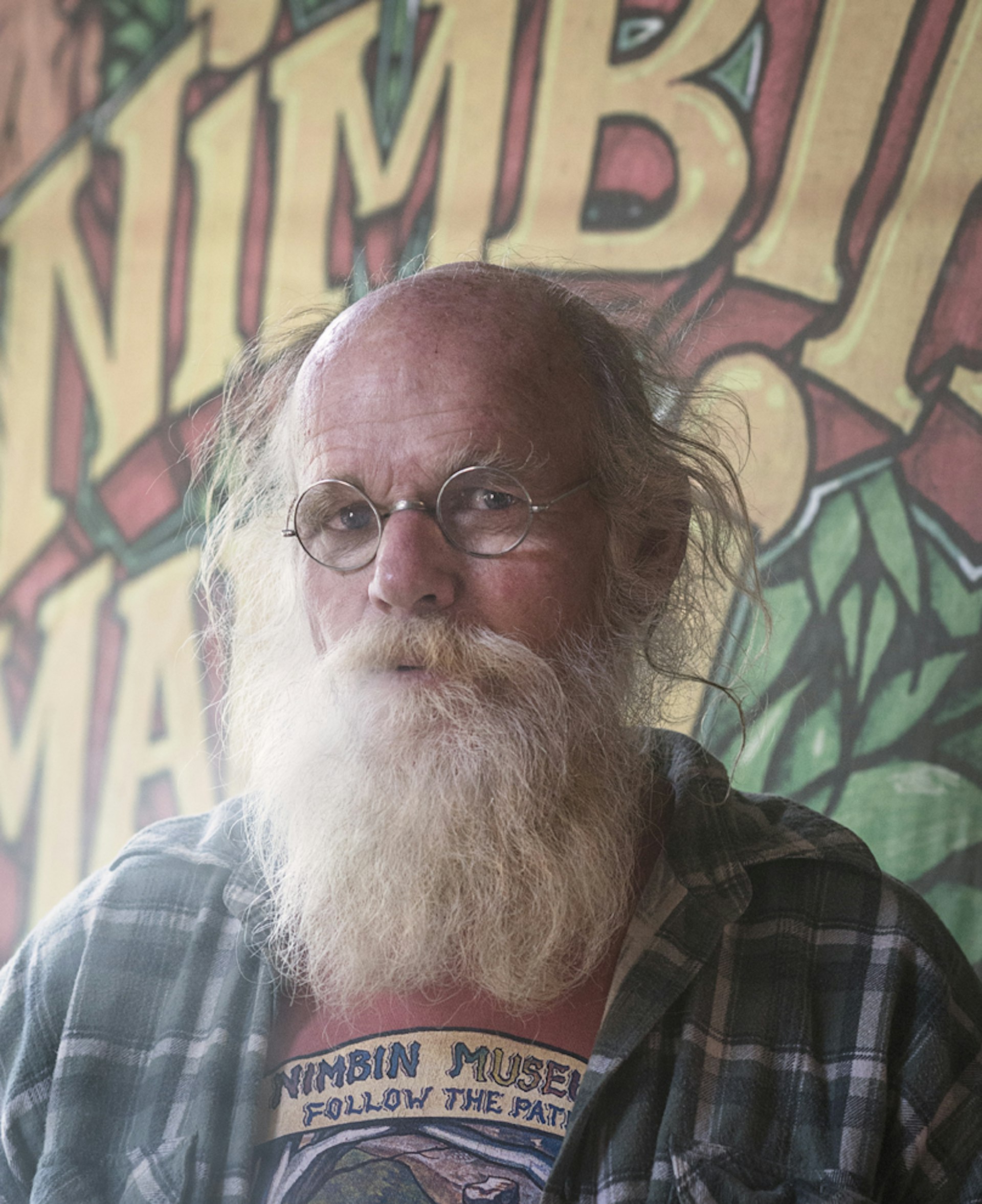
Michael Balderstone
But there has also been a cost. The residents of Nimbin fought for their land and they got it, but now, partly because of their success, it has become visitor attraction in its own right. What was once a quiet dairy town is now a popular destination for day-trippers. The high street now teems with hired caravans and rusty old estates filled with tenting equipment. Craig Fry, owner of the celebrated Nimbin Candle Factory describes a lookout near town: “You used to pull up in the afternoon and maybe stop and have a glass of wine and watch the sunset. You don’t do that now because there’s fifteen vans parked there and in the morning you just see the debris and trail of toilet paper leading off into the trees”.
Buses from Byron Bay bring tourists into the town daily, with a $30 ticket buying them a lift over and three hours or so to explore. Described by some as the drugs supermarket of Australia, many come looking for the ‘magic cookies in Nimbin’ experience, as advertised by most backpacker travel shops. Nimbin is an institution within the travel community and growing more popular by the year.
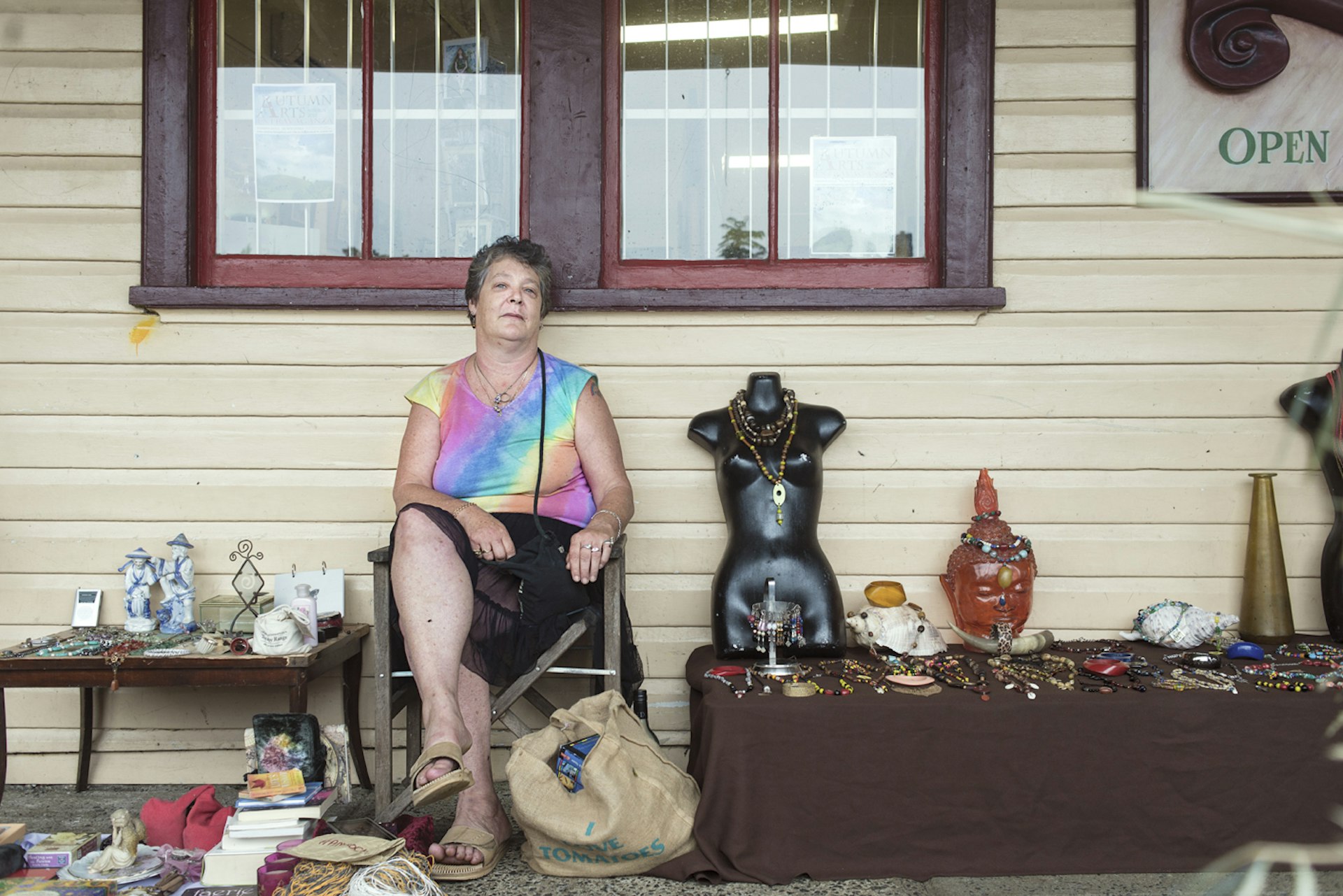
A street seller in Nimbin
Many businesses on the high street now cater to this burgeoning number of backpackers. Similarly, the local council is trying to tap into Nimbin’s rising popularity and is currently implementing a $120,000 marketing campaign for the town. Street sellers adorn the pavements daily, offering handmade nicknacks and trinkets amongst some more under-the-table goods.
This has all brought about a dilemma for the established community. Despite parts of the town’s economy relying so much on the tourist industry, many express a worry that Nimbin is fast on the way to becoming the next Byron Bay, an uncomfortable prospect for many of the residents.
Benny Zables is an Aquarian and previous resident of the Tuntable Falls Community. He is now a political activist and performance artist who has made a name for himself as a prominent figure in the world of environmental activism with his character ‘Greedozer’ and through his role in organising the Canberra Eco Fest. “I’ve seen what tourism does” he says, wearing his Eco Fest 2005 t-shirt and sitting in the space in which forty years ago he produced a show at Aquarius festival and where he still lives, “of course it’s about trying to find a replacement for job creation and encouraging businesses. I’m just not happy with the way it is, there’s not enough engagement with Aquarius.”
For its long-term residents, or at least those who will be around after the last bus of the day weaves its way back to the bright lights of Byron Bay, the growing attention on the town is worrying. Having made space for the tourist industry within a culture that is so expressly anti-consumerist, it seems they are becoming subject to the phenomenon so often linked with areas of counterculture: gentrification. They fear that the cost of living in Nimbin will soon become too high, “It’s like we’ve put in all this work and priced ourselves out of the place” says Katie, “we were told that would happen but of course we didn’t listen.”
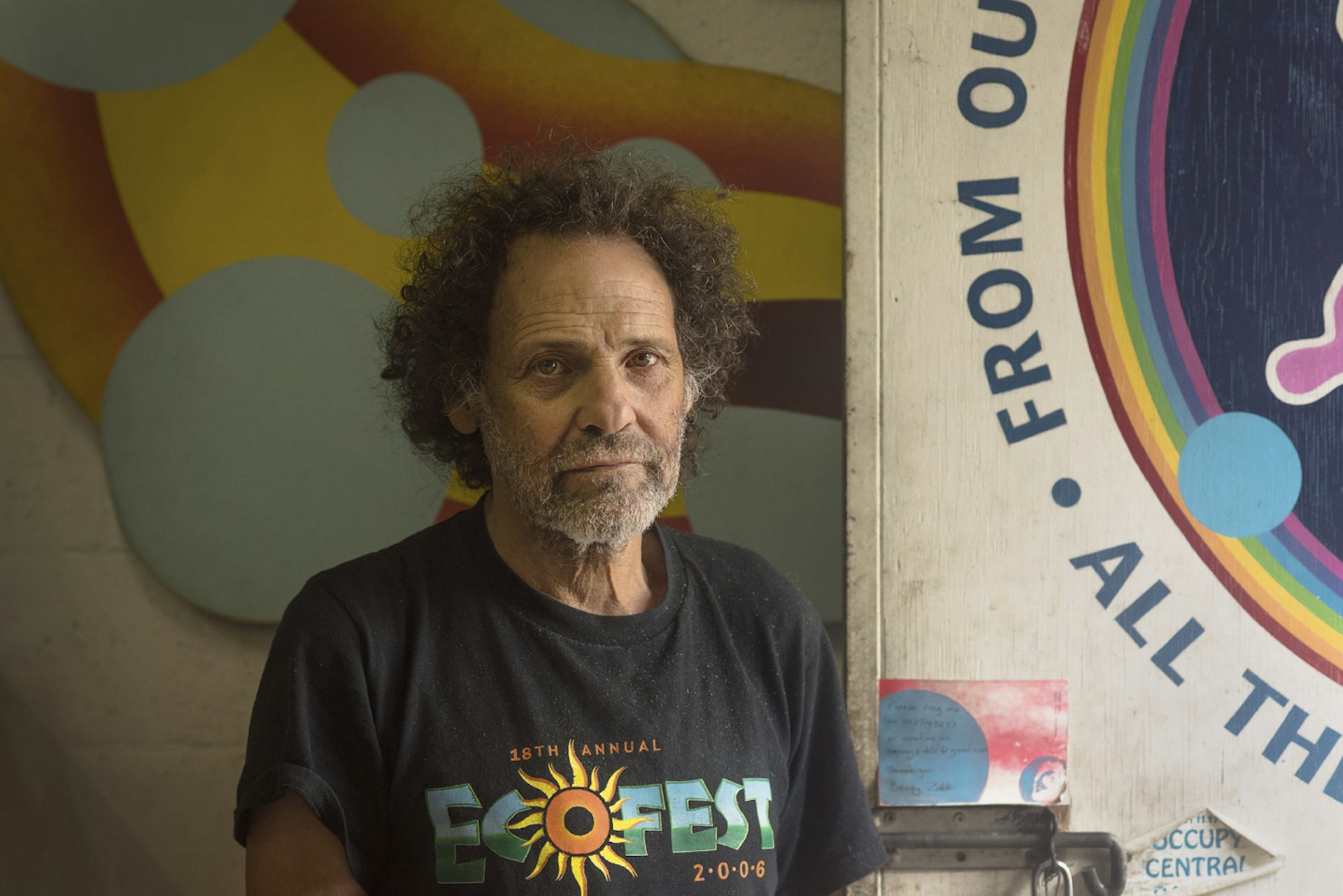
Benny Zables
For many, it’s a juggling act. Tourism is a key source of income and with many residents of Nimbin relying on state welfare this is important. But with a spotlight on the town, the commercial value of the land is starting to exceed what many can afford, particularly the children of the older generation who are wanting to return to the area with families of their own. “The real estate game is all on money” says Benny, “they are pushing up prices. The Aquarius festival site is now a subdivision where they are building houses.”
Of course this is the logic of finance capitalism as property speculators now want to invest in a slice of that Nimbin magic too. “If we want to be creative and innovative, land needs to be made available in a way which is not sucking the money into pockets of the deal makers” Benny says, addling “the good thing about Nimbin is that it pulls together.”

Gypsee’s Van
Proof of this is not hard to come by. Benny tells of a time that Australia-wide supermarket chain Woolworths planned to bring a store to the town. “The only way we could outmanoeuvre them was by doing big desperate things,” he says, “so we took over the building for the community. With crowd-funding and grants, it eventually became the community centre.” Another time, in the late 80s, they built blockades in a protest against the council implementing a sewerage system to the town. “We wanted Nimbin to have composting toilets. We would have been the leader of all that,” he explains. “Anyway we lost that… there were a lot of battles we didn’t win”.
There are countless examples of the Nimbin community pulling together to act as implementers of change. The Nimbin school motto, ‘Success Through Diversity’ is a nod to this; whether they succeed or not, the strength of their community is a tangible force. The challenge will be to see whether the people of Nimbin can still translate that original 1970s peace vision into some meaningful political solidarity and strategic alliances that can resist the advances of the commercial interests they are up against. On past form you wouldn’t put it past them. Many locals are quick to mention that Nimbin holds the highest rate of tertiary educated individuals per capita than anywhere else in Australia. Whilst the source of this claim remains somewhat unclear, proof of them being a enterprising bunch is apparent in the lives they have lived and the battles they have won. It could be that the Age of Aquarius is only just dawning.
Find out more about Mark Leaver’s work.
Enjoyed this article? Like Huck on Facebook or follow us on Twitter.
